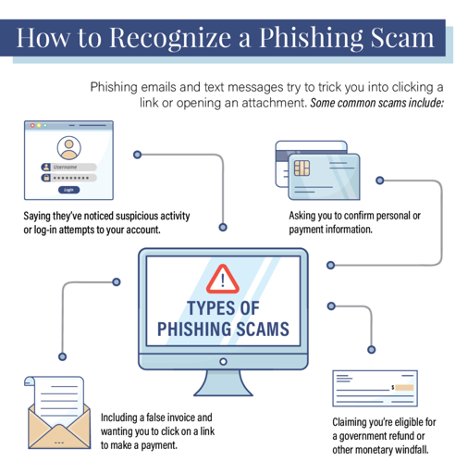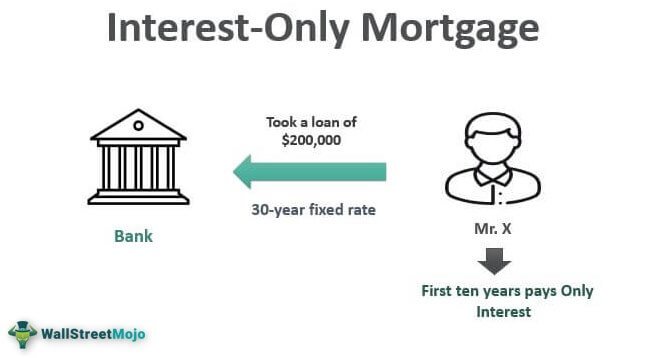Are you worried about falling victim to phishing scams? Wondering how to protect yourself from these fraudulent schemes? Look no further! In this blog article, we’ll guide you through the essential steps to safeguard your personal information and stay one step ahead of cybercriminals. With our practical tips and expert advice, you’ll gain the knowledge and confidence needed to navigate the digital landscape securely. So, let’s dive in and explore how to protect yourself from phishing scams!
How to Protect Yourself from Phishing Scams
Phishing scams have become increasingly common in our digital world, targeting unsuspecting individuals and organizations with the goal of stealing sensitive information or money. These scams can take many forms, from fraudulent emails and text messages to fake websites and phone calls. In order to safeguard yourself from becoming a victim of phishing scams, it’s important to understand how they work and take proactive steps to protect your personal information. In this article, we will explore various strategies and best practices to help you stay safe online.
1. Learn to Identify Phishing Attempts
The first step in protecting yourself from phishing scams is to develop a keen eye for identifying attempts. Here are some common signs that can indicate a phishing attack:
- Generic greetings or impersonal salutations in emails or messages
- Misspellings, grammatical errors, or poor language quality
- Requests for personal information such as passwords, Social Security numbers, or bank account details
- Urgent or threatening language that creates a sense of fear or panic
- Unsolicited emails or messages from unknown senders
- Emails or messages with suspicious attachments or hyperlinks
By being vigilant and recognizing these red flags, you can significantly reduce the risk of falling victim to a phishing scam.
2. Keep Your Software Updated
Outdated software can leave you vulnerable to various security threats, including phishing scams. Software developers regularly release updates that address security vulnerabilities and enhance protection against new threats. Make sure to:
- Enable automatic updates for your operating system
- Keep your web browsers, email clients, and antivirus software up to date
- Regularly check for updates on your mobile devices
By maintaining updated software, you can protect yourself from known vulnerabilities that phishing scammers may exploit.
3. Strengthen Your Passwords
The usage of weak and easily guessable passwords is a common security pitfall. Protect your online accounts by following these password best practices:
- Create long and complex passwords that include a combination of upper and lowercase letters, numbers, and special characters
- Use a unique password for each online account
- Avoid using personal information or common words
- Consider using a trusted password manager to securely store and generate strong passwords
- Enable two-factor authentication (2FA) whenever possible for an added layer of security
By implementing these password strategies, you can greatly decrease the risk of unauthorized access to your accounts.
4. Be Cautious When Clicking Links
Links embedded in emails, text messages, or social media posts can be a gateway to phishing scams. To protect yourself:
- Avoid clicking on suspicious links or URLs from unverified sources
- Hover over a link to preview the destination URL before clicking
- Manually type URLs into your web browser for sensitive websites like banking or online shopping
- Check for HTTPS encryption and a padlock icon in the address bar, indicating a secure connection
- Be skeptical of shortened URLs, as they can hide malicious websites
By adopting these habits, you can minimize the risk of being redirected to fake websites designed to steal your personal information.
5. Be Wary of Suspicious Emails
Phishers often utilize email as their primary method of attack. Here are some precautions to take:
- Avoid opening emails from unknown senders
- Double-check the email address for accuracy and legitimacy
- Verify the sender’s identity by cross-referencing with official websites or contacting the organization directly
- Be cautious of urgent or unexpected requests for personal or financial information
- Do not download attachments or click on links from untrusted sources
By exercising caution and applying these email safety practices, you can minimize the risk of falling victim to phishing scams.
6. Educate Yourself and Stay Informed
Knowledge is key when it comes to protecting yourself from phishing scams. Stay informed about the latest phishing techniques, common fraud schemes, and new security threats. Some valuable resources to follow include:
- Online security blogs and websites
- Technology news sources
- Official communications from your workplace or educational institution
- Government websites or initiatives focused on cybersecurity
By keeping up with the latest trends and developments in cybersecurity, you can empower yourself to make informed decisions when it comes to protecting your personal information.
7. Use Anti-Phishing Tools
Take advantage of technology to enhance your protection against phishing scams. Consider using the following tools:
- Anti-phishing browser extensions: These tools can help identify and block known phishing websites.
- Email filters: Enable spam filters on your email provider to minimize the chances of phishing emails reaching your inbox.
- Firewalls and antivirus software: These provide an additional layer of defense against phishing attempts and other malware.
By leveraging the power of these tools, you can significantly reduce the risk of falling victim to phishing scams.
8. Report Phishing Attempts
If you encounter a phishing attempt, it’s essential to report it to the appropriate authorities. By doing so, you can help prevent others from becoming victims and contribute to the overall fight against phishing scams. Here’s what you can do:
- Report phishing emails to your email provider or IT department
- Forward suspicious text messages to your mobile service provider
- Report phishing websites to web browsers or search engines
- Inform cybersecurity organizations or government agencies involved in combating cybercrimes
By reporting phishing attempts, you can play an active role in protecting the online community.
In a world where phishing scams are becoming increasingly sophisticated, it’s crucial to take steps to protect yourself. By being aware of the signs of phishing attempts and implementing best practices such as keeping your software updated, strengthening your passwords, and being cautious when clicking links, you can significantly reduce the risk of falling victim to these scams. Additionally, staying informed, using anti-phishing tools, and reporting phishing attempts can further enhance your protection. Remember, your online safety is in your hands, and by following the strategies outlined in this article, you can enjoy a safer and more secure online experience. Stay vigilant, and together, we can combat phishing scams effectively.
How To Recognize and Avoid Phishing Scams | Explained
Frequently Asked Questions
Frequently Asked Questions (FAQs)
How can I protect myself from phishing scams?
Phishing scams can be dangerous, but by following these steps, you can protect yourself:
What is phishing?
Phishing is a fraudulent attempt to obtain sensitive information, such as usernames, passwords, and credit card details, by disguising as a trustworthy entity in an electronic communication.
How do I identify a phishing email?
There are several signs that indicate an email may be a phishing attempt, such as:
- Generic greetings instead of personalized ones
- Impersonal email addresses
- Urgent and demanding language
- Poor grammar and spelling errors
- Unusual or suspicious links
- Requests for personal information
What should I do if I receive a phishing email?
If you receive a phishing email, do not click on any links or provide any personal information. Instead, report the email as spam and delete it immediately.
How can I protect my passwords from phishing attacks?
To protect your passwords, follow these guidelines:
- Create strong and unique passwords
- Use a password manager to securely store your passwords
- Avoid clicking on password reset links in suspicious emails
- Enable two-factor authentication for an extra layer of security
What should I do if I accidentally provide my information to a phishing site?
If you accidentally provide your information to a phishing site, take the following steps:
- Change your passwords immediately
- Monitor your accounts for any suspicious activity
- Contact your bank or credit card company to report the incident
- Consider placing a fraud alert on your credit report
How do I verify the legitimacy of a website or email?
To verify the legitimacy of a website or email, follow these tips:
- Double-check the URL for any misspellings or suspicious variations
- Look for HTTPS and a lock icon in the address bar
- Search for reviews or information about the website or sender
- Contact the company directly through their official channels to confirm the email’s authenticity
What can I do to keep my browser secure from phishing attacks?
To keep your browser secure, consider these precautions:
- Keep your browser and plugins up to date
- Enable pop-up blockers
- Disable automatic downloads
- Be cautious when installing browser extensions or add-ons
Final Thoughts
To protect yourself from phishing scams, it is essential to stay vigilant and follow some best practices. First, always be cautious when sharing personal information online, especially via email or unknown websites. Second, be wary of unexpected emails or messages asking for sensitive data or financial transactions. Third, regularly update and strengthen your passwords, using a combination of letters, numbers, and symbols. Additionally, be sure to enable multi-factor authentication whenever possible, as this provides an extra layer of security. By keeping these precautions in mind and staying informed about the latest phishing techniques, you can greatly reduce the risk of falling victim to such scams.



